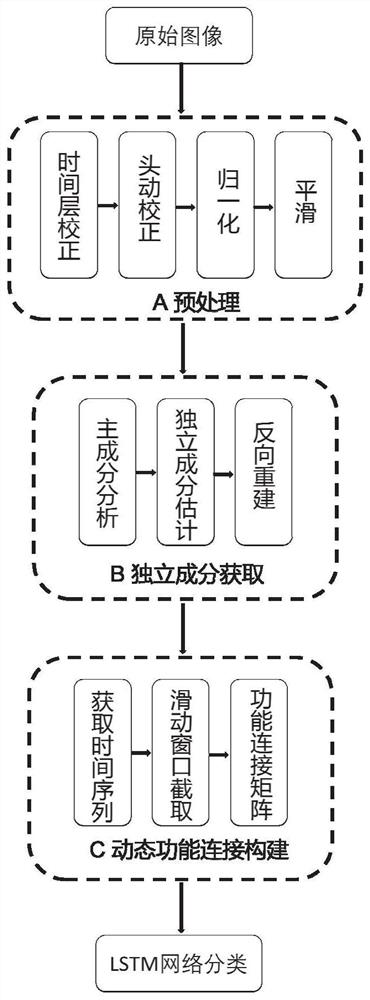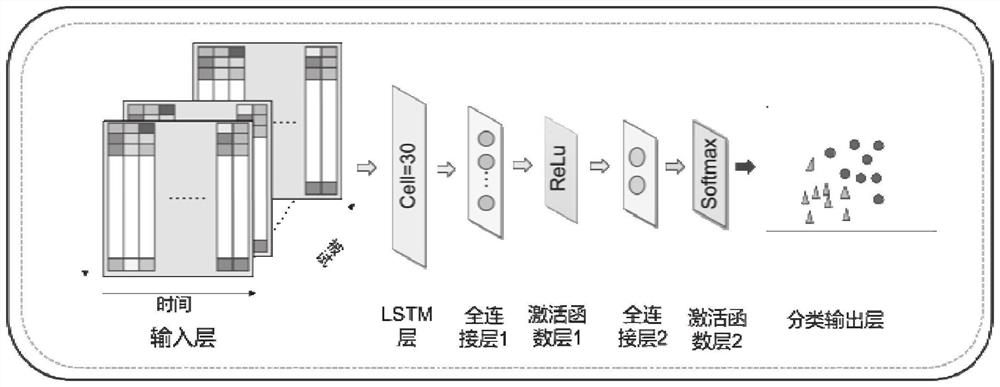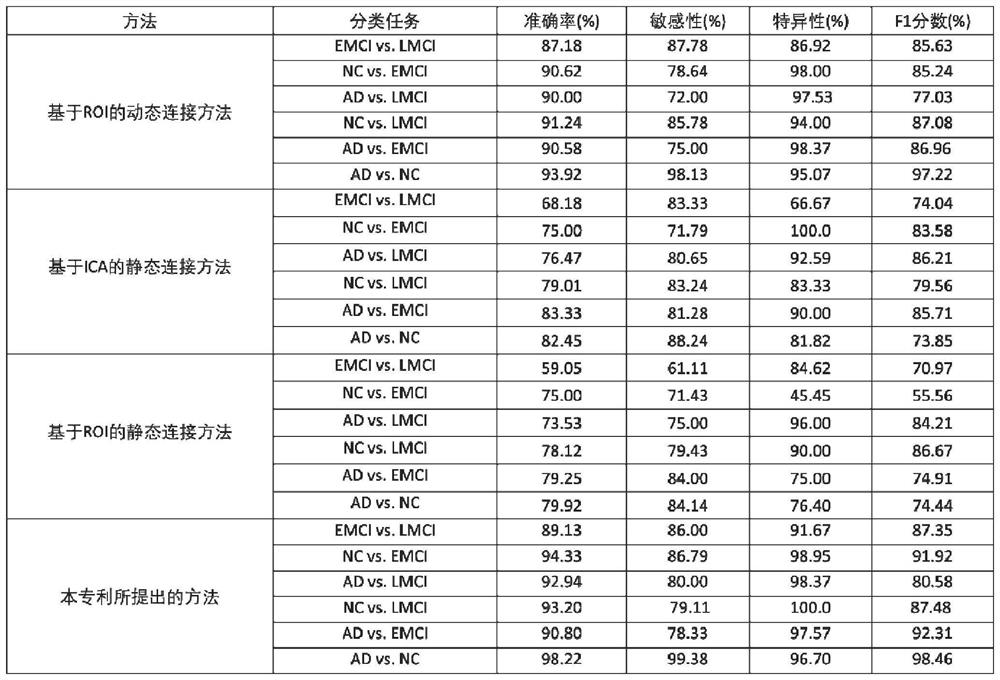Alzheimer's disease classification system based on deep learning
A deep learning and classification system technology, applied in the field of Alzheimer's disease classification system, can solve the problems of functional connection as static, huge functional connection information, and reduce classification reliability, etc., to achieve rapid and effective clinical diagnosis, easy training, The effect of auxiliary clinical diagnosis
- Summary
- Abstract
- Description
- Claims
- Application Information
AI Technical Summary
Problems solved by technology
Method used
Image
Examples
Embodiment 1
[0038] Such as figure 1 As shown, a deep learning-based classification system for Alzheimer's disease, including:
[0039] The data acquisition module is configured to acquire image data;
[0040] The independent decomposition module is configured to use an independent component analysis algorithm to obtain independent components according to the acquired image data;
[0041] The classification module is configured to use the long short memory network model to obtain the classification result of Alzheimer's disease according to the independent components;
[0042] Among them, independent component analysis algorithm was used to obtain group-level independent components, and reverse reconstruction regression was used to obtain independent components of each independent individual.
[0043] Specifically, a deep learning-based classification method for Alzheimer's disease is implemented, including:
[0044] Step 1. Preprocessing the original image to preserve the valuable info...
Embodiment 2
[0077] A computer-readable storage medium, in which a plurality of instructions are stored, and the instructions are suitable for being loaded by a processor of a terminal device and executing the deep learning-based Alzheimer's disease classification system provided in Embodiment 1.
Embodiment 3
[0079] A terminal device, including a processor and a computer-readable storage medium, the processor is used to implement instructions; the computer-readable storage medium is used to store multiple instructions, and the instructions are suitable for being loaded and executed by the processor provided in Embodiment 1 A deep learning-based classification system for Alzheimer's disease.
[0080] Those skilled in the art should understand that the embodiments of the present application may be provided as methods, systems, or computer program products. Accordingly, the present application may take the form of an entirely hardware embodiment, an entirely software embodiment, or an embodiment combining software and hardware aspects. Furthermore, the present application may take the form of a computer program product embodied on one or more computer-usable storage media (including but not limited to disk storage, CD-ROM, optical storage, etc.) having computer-usable program code emb...
PUM
 Login to View More
Login to View More Abstract
Description
Claims
Application Information
 Login to View More
Login to View More - R&D
- Intellectual Property
- Life Sciences
- Materials
- Tech Scout
- Unparalleled Data Quality
- Higher Quality Content
- 60% Fewer Hallucinations
Browse by: Latest US Patents, China's latest patents, Technical Efficacy Thesaurus, Application Domain, Technology Topic, Popular Technical Reports.
© 2025 PatSnap. All rights reserved.Legal|Privacy policy|Modern Slavery Act Transparency Statement|Sitemap|About US| Contact US: help@patsnap.com



